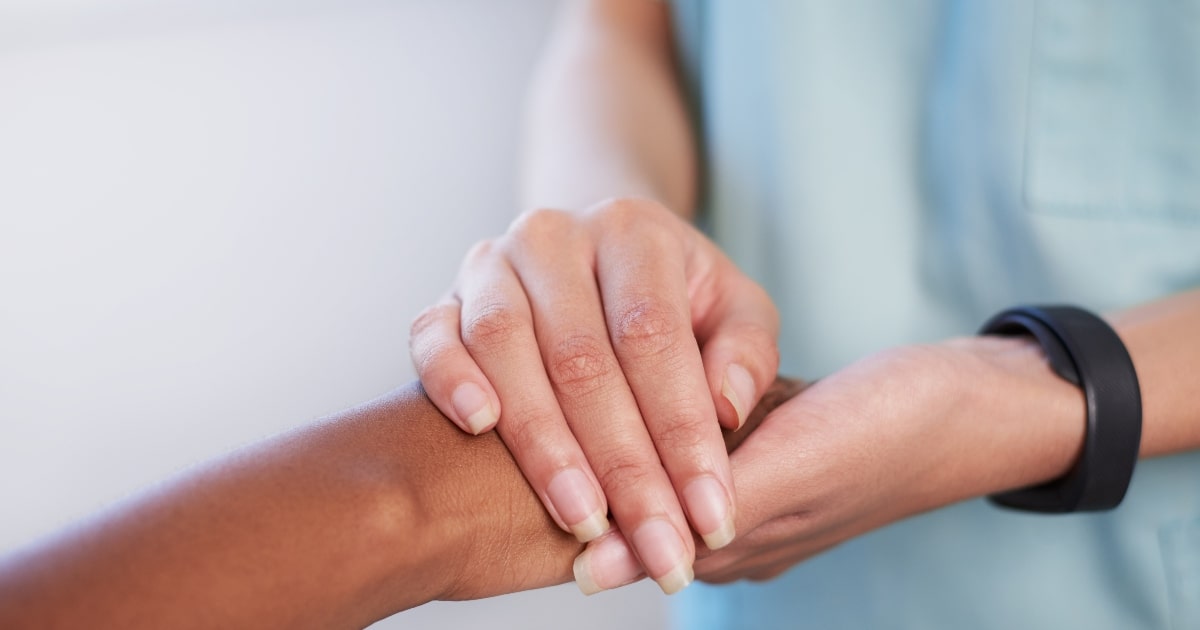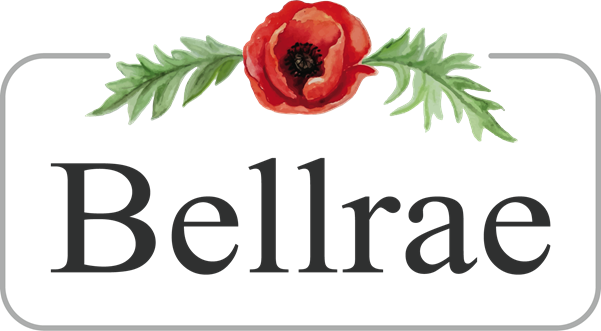The death of a loved one is never easy. When it happens at home, it can feel especially overwhelming. Many people are unsure what to do, who to call, and how quickly they need to act. In such a difficult time, having clear guidance can make the process more manageable.
This article explains what to do when a person dies at home, covering both expected and unexpected circumstances. It also outlines the legal requirements, funeral arrangements, and emotional support available to families.
First steps following death
The steps you need to take depend on whether the death was expected or unexpected.
Expected death at home
If a person was receiving palliative or end-of-life care at home, their passing may have been anticipated. In this case, you do not have to act straight away. Take a moment to be with your loved one and reach out to close family members if you wish.
When you are ready, contact the doctor or palliative care team. They will attend and formally confirm the death.
Unexpected death at home
If the death was sudden and unexpected, call 000 immediately. Ambulance officers and police will attend. They will guide you through the next steps, which may include reporting the death to the coroner.
Unexpected deaths can feel especially distressing. Emergency services are trained to provide guidance and support in these circumstances.
What happens to the body
What happens to the body after a death at home depends on the circumstances. If the death was expected and the person was receiving palliative or end-of-life care, there is no legal requirement to act immediately. Families may choose to keep their loved one at home for several hours. This allows time for private goodbyes and for relatives to gather before arrangements are made for transfer.
If the death is unexpected and referred to the Coroner, the process is different. In these cases, the body may be transferred to the state mortuary for further examination. This is done to confirm the cause of death and ensure that all legal and medical requirements are met.
Confirm the death
Regardless of the situation, a doctor must certify the death before any further arrangements can be made. This involves:
- The person’s doctor or a medical practitioner confirms the person has died.
- Issuing the medical certificate of cause of death, which states the official cause.
This document is essential for registering the death and arranging a funeral, burial, or cremation. Without it, no further legal or funeral processes can proceed.
Arrange mortuary care for the deceased
Once a doctor has confirmed the death, the next step is to arrange for your loved one to be transferred to professional mortuary care.
The person may have already arranged this before their death. If not, this means you will need to contact a funeral director.
For families sending their loved one overseas, you may not need a funeral director. Repatriation specialists have specific knowledge and experience in both interstate and international repatriations. This expertise encompasses repatriation requirements and documentation, including the issuance of a death certificate, embalming, and consular assistance.

Notify family and friends
Telling others about a loved one’s passing can be one of the hardest parts of the process, but it is also an important step in gathering support.
- Start with immediate family members and close friends.
- Ask a trusted relative or friend to help you contact other family members.
- Consider how you would like the news to be shared with extended networks, such as through phone calls, emails, or social media.
- Take your time. There is no right or wrong way to share the news, only what feels respectful and manageable for you.
This allows you to focus on your own grief while ensuring everyone who should be informed receives the news.
Find legal documents and final wishes
Before making arrangements, check whether the deceased person has left instructions for their funeral or memorial service. These may be outlined in their will or in a separate document.
- Locate the will: This confirms the executor and outlines how the deceased person’s estate should be managed. The will often contains details about the deceased’s preferences for burial, cremation, or other funeral arrangements.
- Funeral or memorial preferences: Such as burial, cremation, or a specific style of service. Some people pre-arrange their funeral with a provider. If this is the case, much of the planning will already be in place.
- Organ or body donation wishes: If the person was registered as a donor, this will need to be acted on quickly.
Taking the time to review these documents ensures that the person’s wishes are honoured and can also provide comfort to family members.

Within a few days of death
Once the immediate steps are completed, there are further tasks that should be addressed in the days that follow.
Make funeral arrangements
If the deceased hasn’t left instructions, you will need to decide on the type of service. Options may include a traditional funeral, memorial service, burial, cremation, or, in some cases, repatriation to another country.
Work with your chosen provider to determine the type of service and finalise the arrangements.
Arrangements typically cover:
- Choosing a burial or cremation
- Viewings or private gatherings
- Selecting a venue
- Deciding on the style of service
- Organising transport, flowers, music, and readings
It is important to know that in Australia, holding a funeral service is not a legal requirement. Some families choose not to have a service at all. This option may suit those who prefer a simple cremation or repatriation to their home country. Or if the deceased person requested it in their wishes.

Register the death
In Australia, a death must be registered with the state or territory’s Births, Deaths and Marriages registry. The mortuary or funeral director will usually assist with this process.
Once registered, you can apply for an official death certificate, which will be required for legal and financial matters, such as handling the estate, accessing bank accounts, and claiming superannuation or insurance benefits.
Notify organisations
After you have the death certificate, you will also need to notify relevant organisations. This may include:
- The person’s employer or workplace
- Their GP or medical specialists
- Banks and financial institutions
- Utility providers such as electricity, gas, and internet
- Superannuation funds and insurance providers
- Government services, including Medicare, Centrelink, and the Australian Taxation Office.
Having a list of organisations and account numbers ready can help streamline this process.
After the funeral
Managing the estate
If the deceased person left a will, the executor named in it is responsible for managing the estate. This involves collecting assets, paying outstanding debts, and distributing property according to the will’s instructions.
If there is no will, the estate will be managed according to the laws of intestacy, which outline how assets are distributed among relatives.
Financial matters
Several financial matters will need attention, such as:
- Closing or transferring bank accounts
- Submitting life insurance claims
- Accessing superannuation funds
- Managing property, investments, or debts
These matters will usually require the death certificate. Seeking advice from a lawyer or financial adviser may help you navigate these responsibilities.
Coping with grief
The practical tasks after a death often take priority, but your emotional well-being is just as important. The days and weeks after a funeral can be especially difficult. Grief affects everyone differently, and there is no right or wrong way to experience it.
With an expected death, some families may seek grief support before someone dies or engage a death doula to help them prepare.
If you’re experiencing grief, consider:
- Talking with close family and friends
- Seeking support from a counsellor or grief support services.
- Joining a community group to maintain social connections
- Take time away from work or daily commitments to rest and reflect
- Allow yourself the time to process and heal
Bellrae repatriation and mortuary services also offer guidance and can connect families with grief counsellor services.
You don’t have to manage it alone
Knowing what to do when a person dies at home can help reduce some of the stress during an already difficult time. From confirming the death to arranging a funeral, registering documents, and managing financial matters, each step plays a role in honouring your loved one and beginning the healing process.
Frequently asked questions
What should I do immediately if someone dies at home?
If the death was expected, you do not need to act straight away. Contact the person’s GP or palliative care team when you are ready. If the person’s death was unexpected, call 000 immediately for an ambulance and police attendance.
How long can the body remain at home after death?
If the death was expected, the body can remain at home for several hours, giving the family time to say goodbye.
- When the family is ready, a funeral director will arrange transfer to a funeral home or mortuary.
- If the deceased needs to be transported interstate or overseas, a repatriation specialist will coordinate the process.
- If the death is referred to the Coroner, the body will be taken to the state mortuary for examination.
Who can legally certify a death at home?
A doctor must certify the death by completing a medical certificate of cause of death. If the person’s GP is not available, another medical professional or emergency services can arrange this.
Do I need to register the death if it happened at home?
Yes. All deaths must be registered with the Registry of Births, Deaths and Marriages in your state. Your funeral director usually assists with this process and can apply for the official death certificate on your behalf.
What documents should I look for after someone dies at home?
Check for the person’s will, funeral or memorial instructions, and any documents relating to organ or body donation. These will guide you in making arrangements according to their wishes.
Who should I notify after a death at home?
After registering the death, notify family and friends, and then contact relevant organisations, such as employers, banks, insurance providers, utility companies, government services, and superannuation funds.
Have a question?
Our friendly team are hear to help. Reach out with any questions you may have and we'll be in touch to discuss.
